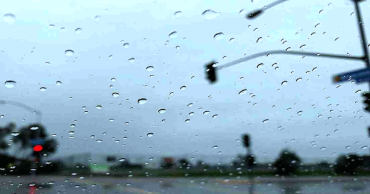respite
Dhaka commuters get no respite from traffic gridlocks
Traffic gridlock has been a chronic problem in Dhaka, the overcrowded capital city of Bangladesh.
What bothers the city dwellers most is that the incidents of long tailbacks are getting longer, turning commuting into a nightmare.
The traffic jams were a longstanding issue but it has recently taken a severe turn with police yet to return to work in full force following the downfall of Sheikh Hasina government on August 5.
Experts held disorder parking, buses stopping haphazardly for passengers, occupation of footpaths, a shortage of road space compared to the number of vehicles, unplanned urbanisation, incompetence and corruption among traffic managers, lack of systematic planning, poor enforcement of laws, and the concentration of industries and offices, responsible for the growing suffering.
City dwellers alleged that though traffic police returned to the work from their abstention, they haven’t been found active like before the fall of Awami League government.
The traffic congestion will take a serious turn if the normalcy doesn’t return to the traffic police members, they observed.
The number of vehicles including buses, private cars, CNG autorickshaws, ambulances, bicycles, and trucks—has surged, exacerbating the problem.
Read: City dwellers suffer amid unusual traffic jams
During the absence of the traffic police on the streets, students took it upon themselves to manage traffic. Amid the chaos thousands of unauthorized battery-operated rickshaws took to the streets from the alleys, worsening the traffic jam.
What public transport passengers say about the jams
Talking to several passengers waiting for vehicles at Press Club, Paltan intersection, Mouchak and Natun Bazar intersection, it was learned that while traffic jams are a daily reality, the current situation has grown increasingly dire.
Urging the interim government to take effective measures to address the problem, commuters alleged that they have to be stuck in public transports hours together due to the traffic jams.
Banker Ruhul Anisur Rahman criticised the traffic police for failing to manage the situation effectively, calling their current role as passive observers.
Read: DMP Commissioner seeks cooperation from transport owners to ease traffic jam in Dhaka
Ferdous, who uses public transport ‘Green Dhaka’ regularly to move between Kuril and Natun Bazar, said disregarding traffic rules some people is contributing to the traffic congestions.
He suggested stricter enforcement by traffic police could mitigate the problem, but noted that such measures have not been visible recently.
The rise of unauthorised battery-operated rickshaws and paddle rickshaws on major roads has led to disarray, with many drivers disregarding traffic laws. The streets are crowded with these vehicles, contributing to increased risk and accidents.
Another passenger said earlier he could travel from Paltan to Kuril within one hour but now it takes around two hours and a half.
Chief Adviser’s directives to address the traffic jam
In a meeting on September 16, the interim government chief Dr. Muhammad Yunus called on the police and experts from the Bangladesh University of Engineering and Technology (BUET) to find swift and effective solutions.
What the traffic police say about the issue
Traffic police officials, including Dhaka Metropolitan Police’s Additional Commissioner Khondkar Nazmul Hasan, said that they are actively working to address the congestion and attributed the issue to various external factors, including protests and the increasing number of unauthorised vehicles.
Read more: DMP to commuters: Be aware of rain-triggered traffic jams
He informed that they have been conducting drives against unauthorised vehicles plying on the streets and imposing fines on the law violators.
1 year ago
Rain brings respite in Dhaka after sizzling heat
A heavy bout of rainfall brought much-awaited relief in Dhaka city Monday night after a week of a heatwave that scorched parts of the country.
Thunder and lightning started to rumble in the skies over Dhaka from 8pm. The rain started around 8:45pm, giving Dhaka residents some relief from the scorching heat, and continued to drench the city for several hours.
Also, apart from the capital, it rained in several districts across Bangladesh including the coastal areas.
A sweeping heatwave and increased humidity in the capital and other parts of Bangladesh has had people yearning for rain for the last few days. At around 5.30pm Monday, the temperature in Dhaka was 36 degrees Celsius but it felt like 44 degrees Celsius.
Read: Rain brings relief to Dhaka dwellers
The country's maximum temperature – 38.5 degrees Celsius – was recorded in Shitakunda in the last 24 hours. The mercury in Dhaka rose as high as 38.1 degrees Celsius. However, the country's highest rainfall – 35mm – was recorded in Kutubdia till 6pm today.
The effects of Cyclone Yaas is yet to be felt in Bangladesh. The country could face the aftermath of the storm, brewing over the Bay of Bengal, Tuesday evening.
The local weather caused the rain and it had nothing to do with Yaas. Also, the temperature may drop further from Tuesday with rains and thundershowers, experts said.
Earlier, the Met Office Monday predicted light to moderate rain or thundershowers accompanied by temporary gusty or squally wind at places over Rangpur, Dhaka, Khulna, Rajshahi, Mymensingh, Barishal, Chattogram, and Sylhet divisions.
A mild to moderate heatwave is sweeping over Rangpur, Rajshahi, Mymensingh, Dhaka, Khulna, Barishal, Chattogram and Sylhet divisions, and it might abate in some places due to rain, it added.
The Met Office earlier in the day confirmed that the deep depression over the east-central Bay of Bengal and adjoining areas had moved west-northwest and turned into Cyclone Yaas, which is hurtling towards India at a speed of four kilometres per hour in a north-northwesterly direction.
4 years ago



